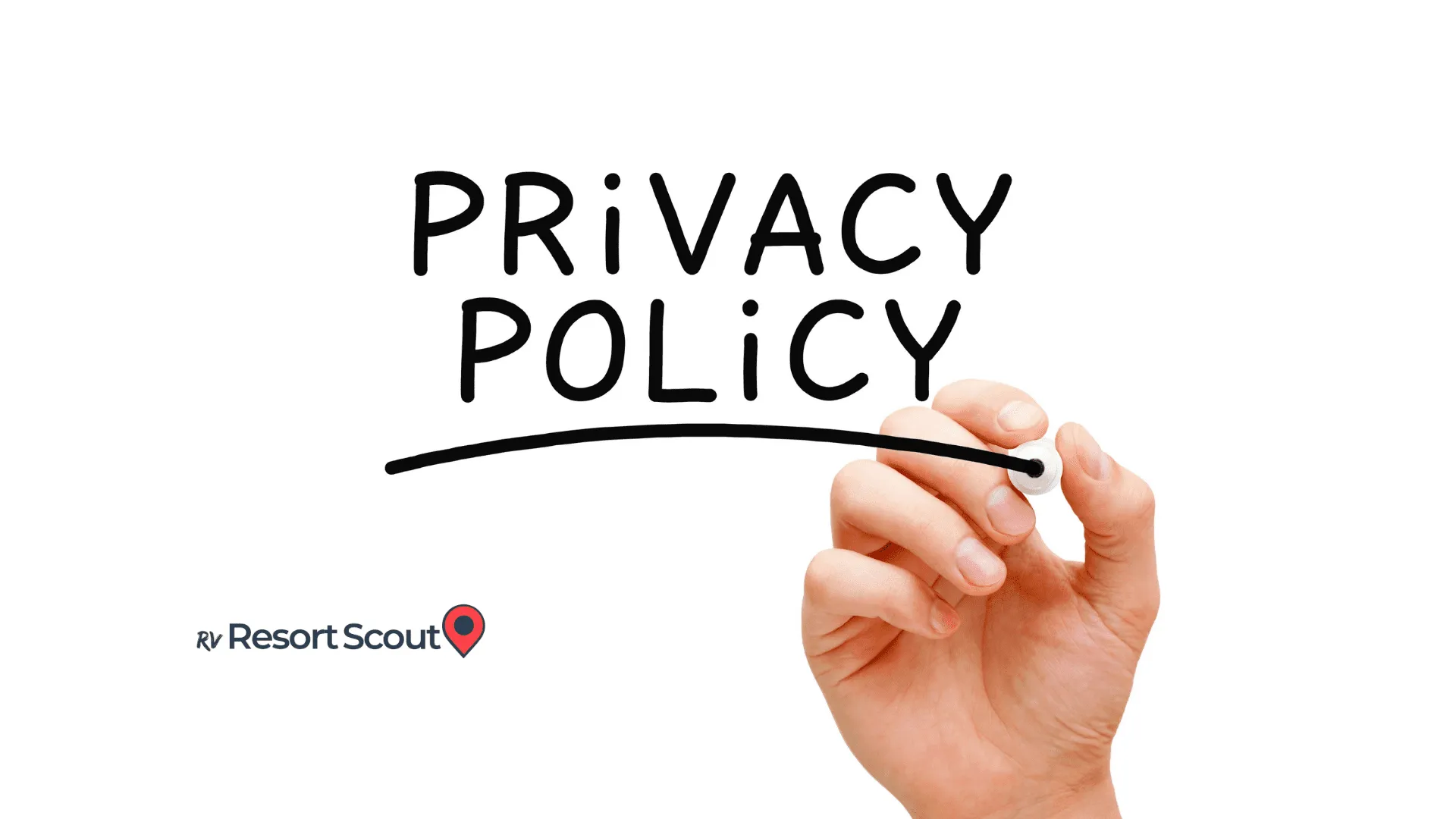A privacy policy statement is something every business needs. But what should your privacy policy include? In many countries, there are even legal requirements when it comes to privacy policies and how they must be displayed on your website. They help build brand trust, remove surprise complaints, and offer the reader of your privacy policy some peace of mind. Take a look at rvResortScouts privacy policy if you wish to see an example.
In European counties, there is a GDPR compliance regulation that needs to be followed. The United States does not have a federally mandated guideline on privacy policies. Instead, it is up to individual states to craft their laws. To help keep this article short, here is a link to a more in-depth breakdown of your State’s privacy laws. Be sure you are following the policies set in place by your State. If not, you may face punishments for not complying. Also, be sure to keep up to date as laws may change within your State.

Besides the Law, Why is a Privacy Policy Statement Important?
Besides the obvious legal implications, privacy policy statements allow customers to trust a brand. It could be the difference between having a customer purchase from you or leaving your website due to trust issues. Privacy is a primary concern to today’s shoppers. People know their data is being monitored, looked at, and stored. Additionally, they want to know how their data is being used in an honest and straightforward manner. Is it being sold, manipulated, or used in a way that genuinely helps their shopping experience? Your privacy policy should clearly explain what will happen to their data, how children’s data will be interpreted, the security of their data, and more. It is also important to include how long you plan on storing a customer’s data.
What Should Your Privacy Policy Include?
So by now, you have a general idea of what your privacy policy should include. But let’s dive a bit deeper into what an effective privacy policy needs. After we cover each section, I suggest that you follow along with the example privacy policy I linked above. By following along with rvResortScouts policy, you will better understand how it should be constructed.
Make it Easy to Find
A common mistake many business owners make is not showing their privacy policy on the first page. So, to fix this, it needs to be in the footer on every page of your website. This way, your users can easily navigate to it and review the policy. Users have come to expect privacy policies, disclaimers, content guidelines, and more relevant information listed on the footer of a website.
What Should Your Privacy Policy Include: Information About You
The “Information About You” section of a privacy policy is an essential part of the document that provides transparency and establishes trust between the business and its users. This section should clearly identify the business and provide relevant information about its location and other pertinent details.
Starting with the name of the business and its location is essential because it helps users know who they are dealing with and where the business is based. This information is important because it can help users identify whether the business is subject to specific laws and regulations, such as data protection laws.
Additionally, this section should also provide other relevant information about the business, such as its contact information, including its email address and phone number. This information is important because it provides users with a way to contact the business if they have any questions or concerns about the handling of their personal information.
Including a brief description of the business’s products or services can also be helpful in establishing trust with users. Providing this information can give users a better understanding of the types of data that the business may collect and how it will use it.
State The Information You Collect
What are you collecting in your privacy policy statement? Your readers will want to know why you are collecting this information and what you are collecting. For example, are you collecting people’s names, emails, addresses, phone numbers, or more? State what you are collecting, and be sure not to leave anything out.
How Will You Use The Information
What are your plans with the information? Will you use it to custom tailor their experience, or will you be giving their data away to third parties? Be crystal clear on how you intend to use your customer’s data. This will increase the level of trust between you and your customers. Examples of this include addresses that will be used for shipping purposes, data collected for marketing purposes, and data given to third parties, so they can use the data as needed.
Craft Your Privacy Policy Statement
A privacy policy is an essential document that outlines how a company or organization collects, uses, stores, and protects user information. It is crucial for businesses to have a clear and concise privacy policy in place to comply with legal requirements and establish trust with their users.
Creating a privacy policy can be time-consuming, but there are plenty of resources available online to help guide you through the process. A simple Google search can provide you with templates and examples to follow. It’s also a good idea to review the privacy policies of other companies in your industry to gain inspiration and ensure that you are covering all the necessary topics.
If you’re looking for a place to start, you can use our privacy policy as a reference. However, keep in mind that every company’s needs and policies are unique, so it’s essential to tailor your policy to fit your specific situation.
Crafting a privacy policy can be a fun and rewarding process, as it allows you to take control of your company’s data practices and ensure that you’re being transparent with your users. However, if you find yourself struggling or needing additional guidance, don’t hesitate to reach out to experts in the field. The comment section below is always open, and we’re happy to help point you in the right direction.
We hope you have enjoyed reading “What Should Your Privacy Policy Include?”. Continue expanding your knowledge by checking out the “10 Best Welcome Email Templates“.



